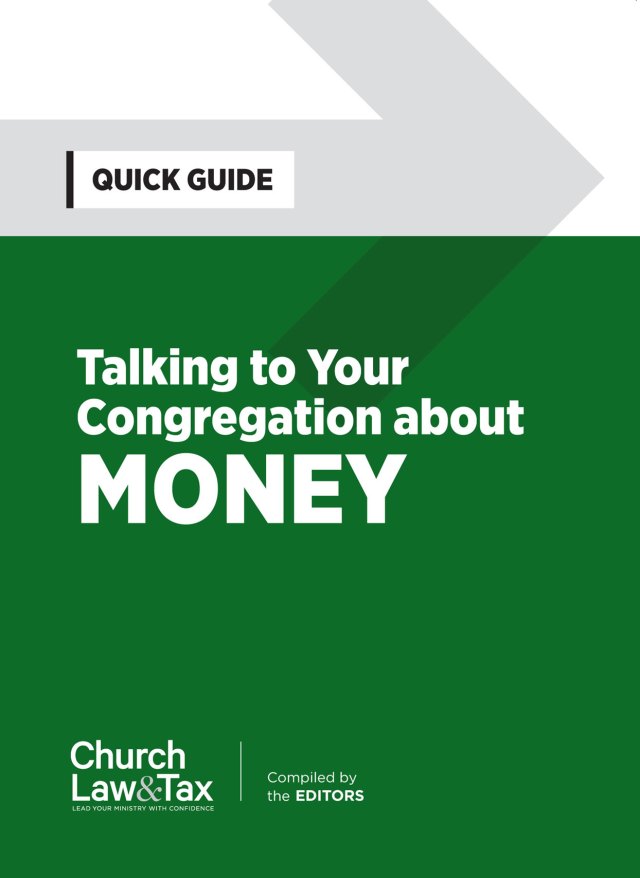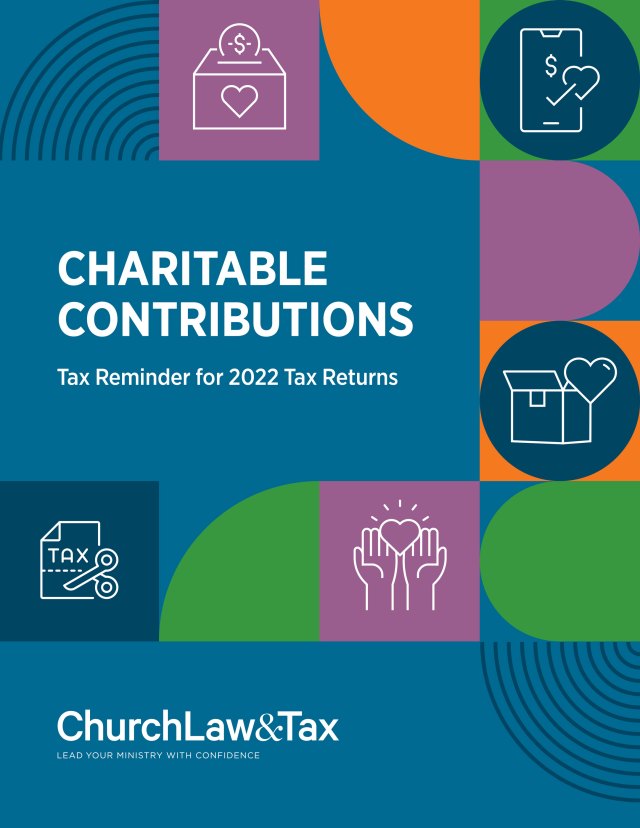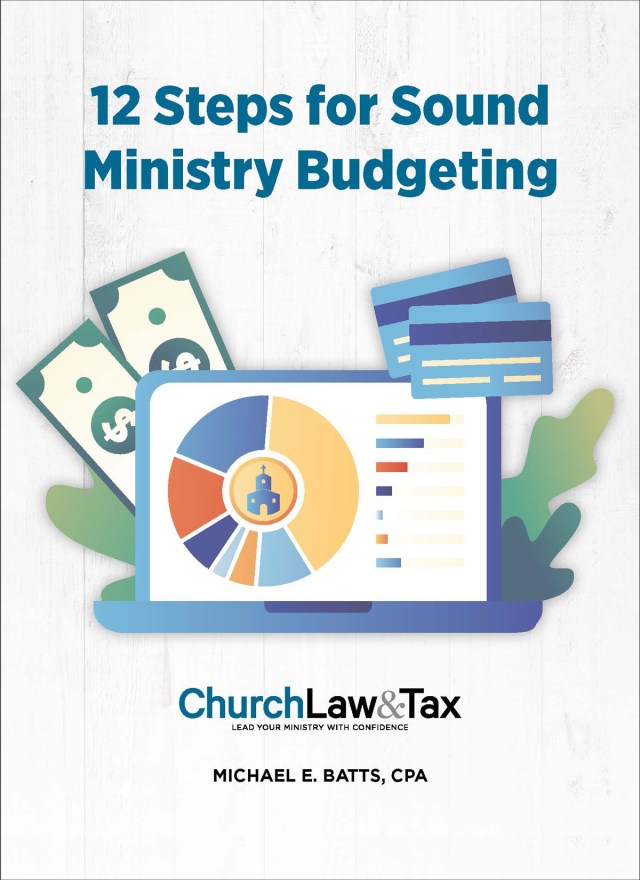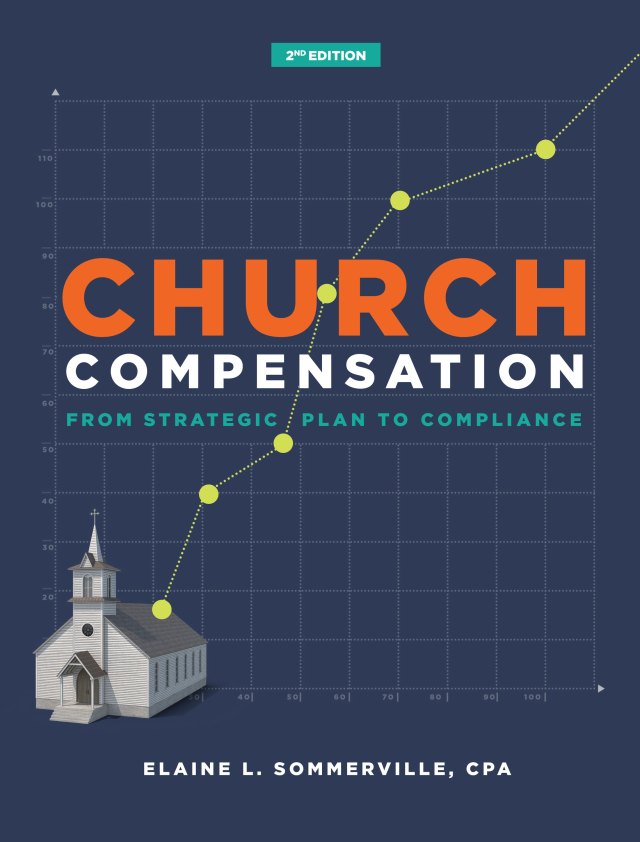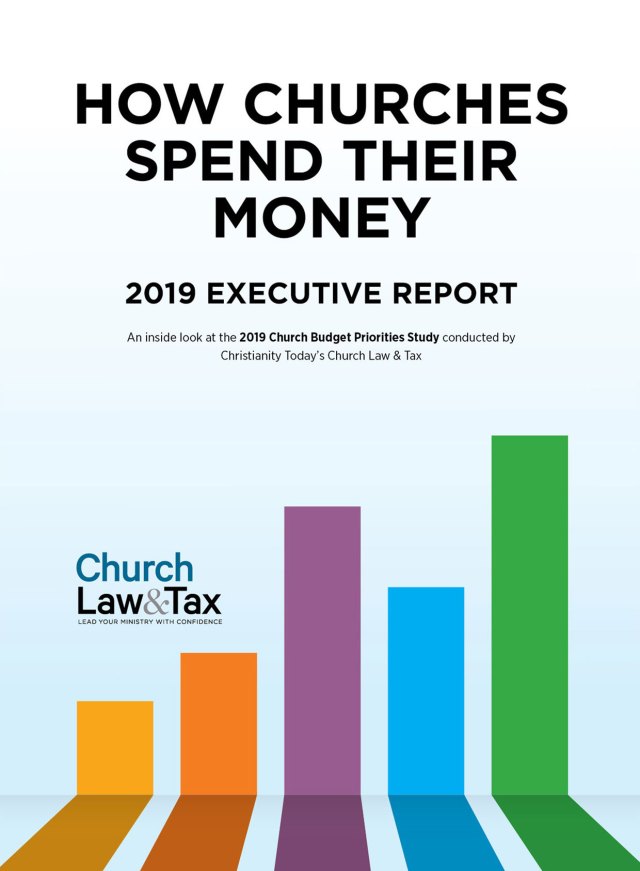Every Wednesday night, Salem Baptist Church of Chicago dishes up complete, balanced, hot meals to single men, women and families in its community. In the first quarter of 2009, Salem saw a more than four percent increase in the number of guests served through its “Feed the Homeless” ministry. Church leaders fully expect this number to rise as the year progresses.
Located in the most impoverished area of Chicago, Salem’s mission always has been to serve “the least of these,” most of whom live nearby. “The community we serve always has had high unemployment,” says Veronica Abney, business administrator for Salem Baptist. “We’ve always provided member assistance for essentials like utility payments, prescription medications, and housing. Our challenge is that the majority of our church members actually consume the resources we provide—food, shelter, medical aid. They are not the individuals giving large amounts of money to our church.”
As unemployment continues to rise, both in Salem’s neighborhood and across the country, many churches (more than 40 percent, according to a recent Your Church church budget priorities survey) are experiencing a decline in giving.
“We’ve seen a 5 to 6 percent drop in giving compared to 2008,” Abney says. “This has forced us to reduce our assistance budget by 35 percent.”
Funding the difference between a community’s increased needs and an overall decrease in church giving is but one challenge churches like Salem and many others face this year.
To find out exactly how churches are slicing up a diminishing financial pie, Christianity Today surveyed American churches on budgets and the economy. We then convened a roundtable gathering of church leaders (see the bio box we include for details on the participants) to unpack the results of the survey from our 1,168 respondents.
Their insights, coupled with data from the Your Church survey, reveal that churches face unprecedented budget challenges as well as new ministry opportunities. Both of these will require a combination of ruthless cuts in expenditures, boundless faith in God’s provision, and wisdom to know how to maximize the opportunities churches have to serve a world in desperate need of a Savior.
Budgets Up, Giving Down
YC: Thirty-two percent of survey respondents say their church’s budget has increased in 2009. At the same time, 40 percent of churches surveyed say giving is down. What can churches do to adjust to this shortfall?
Ed Stetzer: Historically, evangelical Protestant churches tend to be tithe-driven. I think that’s one of the reasons why they’ve have done better than the economy as a whole. I’m not saying they’re doing well, but they’re not taking the hit that some sectors have because people who still have jobs continue to tithe. Effects of unemployment tend to lag a bit for churches that emphasize tithing, but as the unemployment rate continues to increase, more congregations will get hit financially. Churches need to be ready for this impact.
Gary Fenton: We’re anticipating that the economy very well could get worse, and so as a staff and church leadership, we’re working on reducing the expense side, especially in reducing any nonessentials. For example, we recently began sending out our newsletters electronically. Nobody took this effort seriously until now, but this change has allowed us to significantly reduce our mailing costs. Also, we’ve cut down the amount of food we provide after services and at events. We’re starting to see how we fattened our budget over a period of time without realizing it. There is much we can live without it, and we’re trying to make these kinds of cuts now so that when the worse time comes we’ll be ready.
Anne Kessler: We froze all salaries at last year’s level, and unfortunately, we cut retirement benefits for our staff. We’ve all seen the need to tighten our belts so as not to affect ministry. And last year we prepared a doomsday budget, anticipating a day when we might have to pull it out. We’re keeping a close eye on our reserves and on giving trends.
Scott Landon: We put together a contingency plan, too, so that based on signs we see, such as contribution trends or changes in unemployment, we can determine whether we need to move into Level One reductions, which would mean taking measures like halting all capital additions. If it keeps getting worse, we’ve already identified Level Two cuts, and then the worst case scenario—Level Three. If we ever have to activate this contingency budget, it’s not going to be based on emotion. The decisions have already been made. Of course, our hope is that we never have to use it. We keep praying that the people God is financially blessing right now will be able to step up more, because there are others that can’t do it.
Veronica Abney: We’re actually executing a “variable budget” now as we speak. That’s what I’m calling it. It’s like a moving target. Every quarter we’re looking at the history, making adjustments and revising our budget as we’re moving. We froze our budget, meaning we have cash available, but we’re not releasing funds to spend. We just don’t have enough depth of funds to be able to borrow from a reserve.
YC: Where does faith fit into these budgeting decisions?
Landon: We can look at the numbers on giving, but we don’t want to base our decisions for expense reductions or other aspects of our budget strictly on those numbers. We’re trying to balance facts with walking by faith, partly because we want to model this to our congregation. You’ve got to keep that fine balance between living the way God wants us to—dependent upon him—versus just making business decisions.
Kessler: I came onboard with Church of the Resurrection in 2006, and their budget was already in place. They were heading into the new year with a 26-percent increase in their budget. Coming from the business world, I thought they were nuts. Twelve to fourteen percent is aggressive. Twenty-six! Come on! You know what, they made it. I have been amazed at how our leadership listens to God and steps out in faith. They’ve really scaled back in answer to the economy, but also based on what they’re hearing from God. The message seems to be, Don’t stop, but reevaluate.
Staff and Pay Cuts
YC: According to our survey, churches allocate the largest portion of their operating budget—38 percent—to salaries and wages. Twenty percent of churches have instituted salary freezes, 14 percent have implemented a hiring freeze, 7 percent have enacted pay cuts, and 7 percent have resorted to layoffs. What measures, if any, has your church done to reduce payroll expenses?
Fenton: One of the things the top level of our staff did at the end of 2008 was to voluntarily freeze our salaries to avoid having to freeze support personnels’ pay rate. We didn’t publicize this, yet I think enough people found out about it, and it’s caused all of our staff to think through spending priorities. If there are staff vacancies, can we combine positions to avoid the need to hire right now?
Abney: We froze salaries in 2006, and in February we went down to a four-day workweek. We decided to do that as opposed to laying off 20 percent of the staff, which would have meant 20 percent of our staff ending up with no compensation versus all of us getting paid 80 percent. That was a decision that our senior pastor and I made in order to salvage everybody’s position and not have anybody be at loss without any income from the church and the ministry.
Also, in January, we laid off our audio and video department and made them contract workers so that we don’t pay payroll, taxes, and benefits. By outsourcing audio and video requirements, we don’t have to carry that overhead on our ministry side. We look at a lot of things based on the 80/20 rule. What 20 percent of your staff do you need in order to yield 80 percent of the ministry work? And what part is a support component that doesn’t necessarily have to be there day to day?
Landon: We’re continually challenging our staff to look at what roles can be handled by volunteers, especially high capacity volunteers—people who bring a specific skill that you’d normally have to pay. For instance, maybe you’ve got a technology person who can give you four hours every Saturday. People are willing to help, but we just have to change our mindset a little.
Unintended Consequences
YC: Is the current economy forcing churches to rethink the staff-driven model for doing ministry?
Stetzer: I think that one of the unintentional benefits of this economic downturn is the church will be forced to become a more volunteer-driven organization. Ultimately that can be a good thing. In Lifeway’s 2009 church budget survey results, half the churches in our survey reported a greater sense of excitement about the opportunities to minister to the needy, and 37 percent said they had increased spending from the church budget to help the needy. Churches have seen this economy as an opportunity, a call to action. This is a very positive response to the economy, a sense of excitement and also a sense of action.
Churches may have less money, but I think they’ll have more opportunity to show the good news of Jesus Christ in serving the hurting. There’s good evidence that people are more open and receptive during these times.
Abney: We have always focused on meeting our community’s needs through sweat equity, or, as I say, putting “skin in the game.” We had an amazing 68 percent increase in volunteers in the Feed The Homeless ministry during 2008, and another 12 percent jump in the volunteer rate earlier this year. In 2007, the church volunteer growth came after the entire church went through Vision 2007—a 26-week focus on getting out of the pews and into the community to serve. Our senior pastor delivered a series of messages during this time, which ignited church members to volunteer.
Landon: We launched an initiative last October reaching out to a local apartment complex where we provide case management and an after-school program. People are really excited; they’ve contributed to this effort with gifts above and beyond their normal giving. We’re looking at a new initiative in Europe, too. We’re not holding back on our strategic outreach. We’re saying, in these times more than ever, we have to be doing this.
Fenton: We have more people who are going on the international mission trips than we’ve ever had before. We thought that we might have less people volunteer this year because each person pays their own way, but we’ve had a record number respond. We also support some local ministries. At a December event, our goal was to have about 350 adults show up and support partnership missions with other nonprofits. We had almost 800 adults show up the first Sunday afternoon in December to be involved.
Stetzer: The economy is perhaps forcing us to engage and embrace in the priesthood of all believers and the need for us to move beyond the “clergified” approach to ministry—that only pastors and clergy can do ministry—but instead see believers owning ministry. The Scripture teaches that they do. Evangelicals and Christians as a whole are understanding the need to be more engaged in service to the poor. I think that was a hypothetical thing a few years ago. Now many people are saying this is not just something I should do but something I must do because I see people struggling around me. God was speaking to the church about the need to show the love of Christ to those who are hurting. Now we’ve got more people that are hurting to show the love of Christ to. So I think the emphasis on believers owning the ministry—serving those who are hurting—I think those are benefits of this economic crisis.
Fenton: I’ve been through some recessions before—never one quite like this—but in times past when people had a desire to do something benevolent, they would take up an offering and help poor people by giving money. It was very cash-oriented. Now, I sense people saying, let’s go into some neighborhoods and do more than send some groceries and food. Let’s really invest in these neighborhoods with sweat equity and long-term money. This is not only a smarter view but a more holistic way of dealing with people in need than I’ve ever seen before. I’m encouraged by the long-term view people are adopting toward reaching out to those in need.
Abney: Unfortunately, when you look at how we serve the ‘least of these,’ we tend to set them up to expect help instead of teaching them how to give. Because of this, we’ve learned not to lie dormant and rely on core giving patterns of seasoned congregants. We focus on spiritually maturing our members—especially new converts—and developing their giving patterns. Mainly, we do this through our job program. This is for our members that are unemployed, including seniors who are returning to jobs because their IRAs and 401ks no longer provide what they used to. We teach resumé writing, dress for success—things to prepare our congregants to be able to get back into the work force. Once they get a job, we encourage them to share their testimony on how the church helped, and we teach them about tithing. By sharing their success story, other members see that it is possible to find work, and also that giving from your income is part of following God.
Measures That Work
YC: What tips can you share with other churches on how you’ve either effectively cut costs in a particular area or significantly increased giving?
Abney: For us it’s been cell phone usage. We used to provide cell phones for staff members. Now, everyone buys their own phones. We eliminated about $15,000 a month in cell phone usage.
Kessler: Probably the biggest savings I’ve been able to find is in shopping for cost reduction in benefits. Our church always wanted to provide good health coverage for their employees. Thankfully, I was able to find a good alternate carrier and saved tens of thousands of dollars in this area.
Fenton: One of the most effective things we’ve done—and it’s not a quick fix; it’s a long-term process—is to teach biblical stewardship as part of a newlywed class. We publicize it in the community. We have found that the people who go through this 13-week training often stay in the church and become our most vocal advocates for doing stewardship training in the church. In many cases, we’re seeing better stewardship patterns in our younger couples than we see in baby boomers. Baby boomers give out of their generosity. If they are doing well, they give. In the 25- to 35-year-olds, we see them making the decision to live a simpler life in order to do more.
Stetzer: The observation I would make in today’s economy is that people seem very responsive to learning how to manage their money. I heard one person say they’d beat a path to the door of the church that will teach them to handle their finances well. So I think there’s opportunity here—a cultural bridge across which the message of the gospel which takes over everything, not just our finances, but everything, can be communicated. And I hope churches seize this opportunity by showing that they care about the needs of the hurting, but also by helping people think differently about finances and more about God’s agenda.
TIP: Develop up to three budget contingency plans now so that future trends or events don’t prompt decisions based on emotion.
TIP: Do an organizational audit and a congregational skills audit now to determine areas where your church can become more volunteer-driven.
TIP: Consider replacing cell-phone reimbursement plans with smaller, monthly stipends toward cell phone use.
TIP: Shop health coverage carriers to compare pricing and plans now, even if the current contract isn’t up for renewal.
